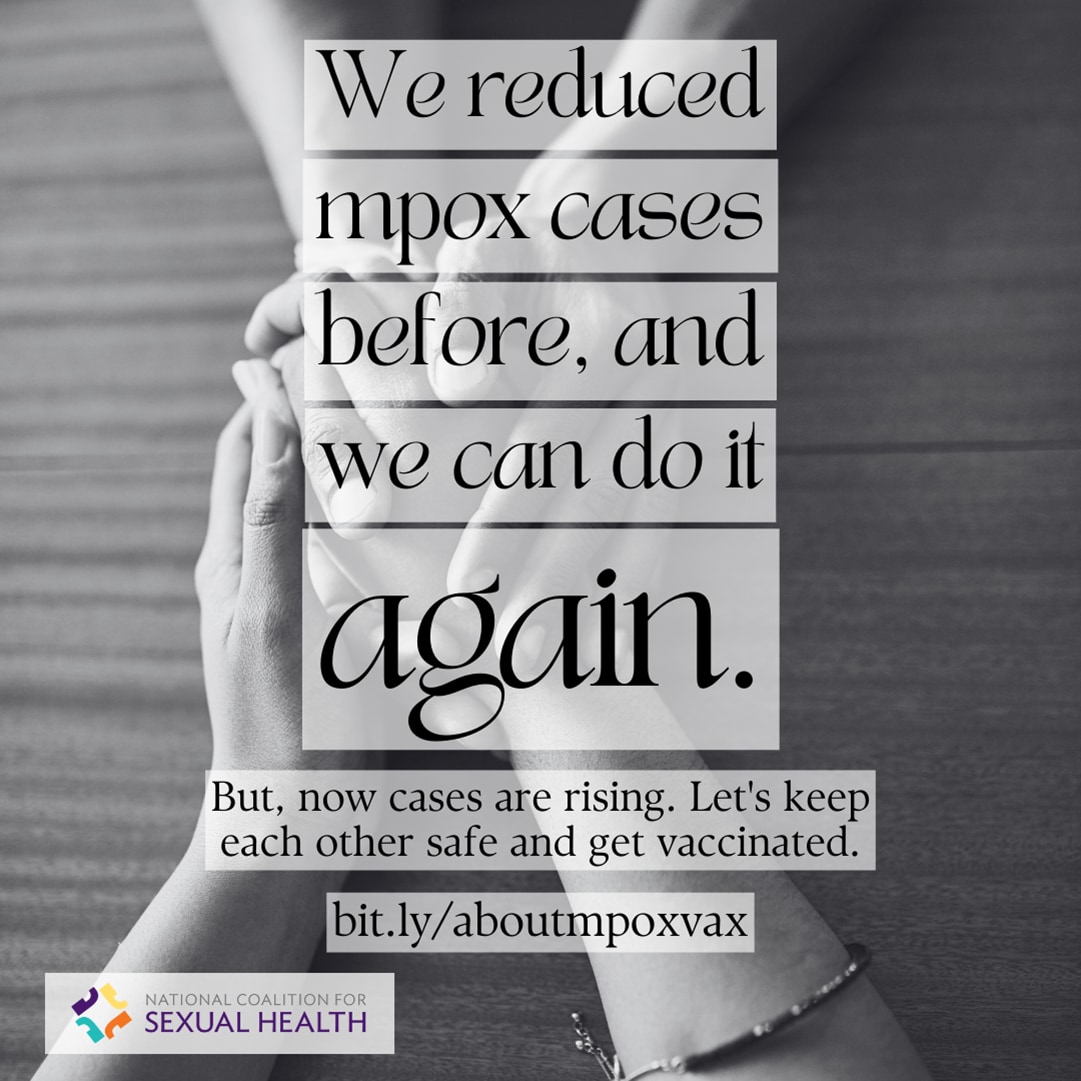At a glance
HIV surveillance reports, clinical guidelines for doxy PEP, NCHS mpox vaccine resource, PIX TA portal, ASTHO Health Review Morning Edition podcast, new director of White House Office of National AIDS Policy, National HIV Testing Day and World Hepatitis Day
Stay connected
Get Connections in your email
From the director

CDC recently published three new HIV surveillance reports. I wanted to take the opportunity to highlight a few key findings:
Estimated HIV Incidence and Prevalence in the United States, 2018-2022
- New HIV incidence estimates show national efforts are continuing to reduce the number of new HIV infections, with particularly large reductions of 30% over the past 4 years among young persons aged 13-29 years.
- While data demonstrate some success in decreasing incidence of HIV and some disparities, there continue to be higher HIV incidence among gay and bisexual men, transgender women, and Black/African American, and Hispanic/Latino persons.
- Among persons who received an HIV diagnosis in 2022, 82% were linked to HIV care within one month of their diagnosis.
- While there was overall progress in eliminating perinatally acquired HIV, in 2022, the rate among Black persons was 5 times the overall annual rate of 1.1 per 100,000 births.
- Persons who were diagnosed with HIV and alive at the end of 2022, 65% were virally suppressed at the most recent viral load test.
- In 2022, in the United States (including 6 territories and freely associated states), there were 38,043 HIV diagnoses with more than half (52%) occurred among people living in the South.
- The rate of HIV-related deaths has declined by 25% to the lowest level since the beginning of the epidemic, which highlights the effectiveness of early diagnosis and connecting and supporting people with diagnosed HIV to high quality care and treatment.
While there is measurable progress, there are more opportunities to decrease incidence, improve health, and reduce disparities. Thank you for all of your work in preventing HIV. You can read CAPT Neblett Fanfair and my letter from the Director to read more. New data are available on CDC's AtlasPlus.
Follow me on X
Publication highlights
CDC Clinical Guidelines on the Use of Doxycycline Postexposure Prophylaxis for Bacterial Sexually Transmitted Infection Prevention, United States, 2024
CDC has released clinical guidelines for the use of doxycycline postexposure prophylaxis (doxy PEP.) Doxy PEP demonstrated benefit in reducing the rates of syphilis, chlamydia, and gonorrhea in certain populations and represents a new approach to addressing sexually transmitted infections prevention in men who have sex with men and transgender women at increased risk for these infections. For more information about this recommendation, including rationale, administration, and dosage please see CDC Clinical Guidelines on the Use of Doxycycline Postexposure Prophylaxis for Bacterial Sexually Transmitted Infection Prevention, United States, 2024 | MMWR.
Suggested Sources: Bachmann LH, Barbee LA, Chan P, et al. CDC Clinical Guidelines on the Use of Doxycycline Postexposure Prophylaxis for Bacterial Sexually Transmitted Infection Prevention, United States, 2024. MMWR Recomm Rep 2024;73(No. RR-2):1–8. DOI: http://dx.doi.org/10.15585/mmwr.rr7302a1.
New product offerings
National Coalition for Sexual Health (NCSH) mpox vaccine promotion toolkit

The National Coalition for Sexual Health (NCSH) has developed a series of digital and print materials for health departments and community-based organizations to promote the mpox vaccine. The NCSH Mpox Vaccine Promotion Toolkit includes promotional materials (flyers, postcards, palm cards, digital ads, and social media captions) that can be used and/or adapted for print and digital spaces. Open space is included within many of the designs to allow for co-branding.
Policy Innovation Exchange (PIX) TA Portal

NCHHSTP has an exciting new resource. The new technical assistance law and policy portal, named Policy Innovation Exchange (PIX) TA Portal, includes information on HIV, viral hepatitis, STD, and TB prevention, including harm reduction. PIX's goal is to support leaders across diverse sectors in their efforts to advance policies that address the root causes of health disparities related to our infectious disease priorities.
Once connected to the law and policy portal, NNHPI and our other TA partners can help you and your funded recipients talk through issues, current needs, and begin to scope out a plan for TA development and provision.
Need public health data? Use the new NCHS Data Query System!
CDC's National Center for Health Statistics (NCHS) developed a Data Query System (DQS) that makes accessing, finding, and using public health data faster and easier. DQS is an online tool that allows users to access data on more than 120 public health topics.
Users can filter and display health information by demographic, socioeconomic, and geographic characteristics of interest, such as race and Hispanic origin, sex, age, income, geography, and more.
Start your search for health information today! Discover NCHS DQS.
Launch of new CDC.gov
On May 15, 2024, CDC launched the newly updated CDC.gov. The new sites feature improved content, a better user experience, and a new look and feel. While most of CDC's new content will be available at launch, some content will return in phases so stayed tuned for more information and updates. For a tour of the new site and other information about the relaunch go here.
News media updates
ASTHO's Public Health Review Morning Edition
The Association of State and Territorial Health Officials (ASTHO) has released a Public Health Review Morning Edition podcast episode with Michelle van Handel, associate director for Program and Performance Improvement Office, NCHHSTP, CDC. To learn more about their discussion using a syndemic approach to disease prevention, listen here.
Five ways to combat surging syphilis cases in the United States
Dr. Laura Bachman, acting director of the Division of STD Prevention at CDC, has written an opinion piece for the American Association of Medical Colleges (AAMA) about five ways to combat the alarming rates of syphilis in the U.S. Her recommendations include normalizing discussions about sexual health, increasing access to STI testing and treatment, and prioritizing STIs for public health outreach. To learn more about her recommendations about this important topic please see her piece in AAMA.
White House Office of National AIDS Policy welcomes new Director Francisco Ruiz

CDC is excited to announce that DHP's Francisco Ruiz has been named the next Director of the White House Office of National AIDS Policy (ONAP). He is an experienced public health expert who is known for fostering collaboration with a variety of community-based organizations and government agencies. To learn more about the new ONAP director, please go here.
State-Specific Hepatitis C Virus Clearance Cascades — United States, 2013–2022
Hepatitis C is a deadly disease, but it is curable with proper treatment. National goals for 2030 include at least 80% of persons with hepatitis C to achieve viral clearance through treatment; however, according to analysis of 2013-2022 state data, only 10%-51% of individuals with hepatitis C achieved viral clearance. This indicates substantial gaps in hepatitis C diagnosis and treatment. Using our data, we can help guide prioritization of resources and activities for this infection and begin to find greater success in viral clearance through treatment. To learn more please see State-Specific Hepatitis C Virus Clearance Cascades — United States, 2013–2022 | MMWR (cdc.gov).
